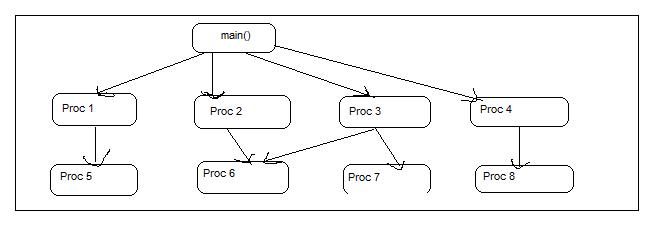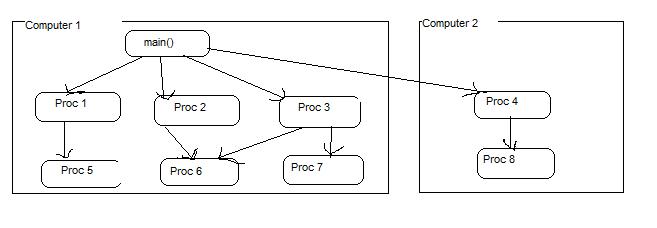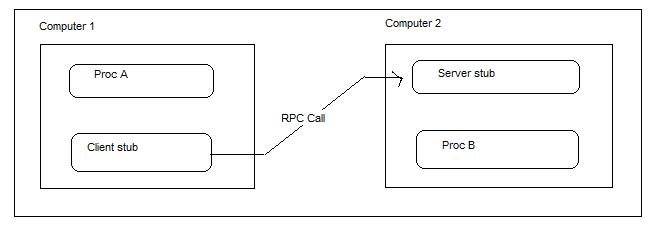一、什么是远程过程调用
什么是远程过程调用 RPC(Remote Procedure Call)? 你可能对这个概念有点陌生, 而你可能非常熟悉 NFS, 是的,
NFS 就是基于 RPC 的. 为了理解远程过程调用,我们先来看一下过程调用。
所谓过程调用,就是将控制从一个过程 A 传递到另一个过程 B, 返回时过程 B 将控制进程交给过程 A。目前大多数系统
中, 调用者和被调用者都在给定主机系统中的一个进程中, 它们是在生成可执行文件时由链接器连接起来的, 这类过程调用称
为本地过程调用。
远程过程调用(RPC)指的是由本地系统上的进程激活远程系统上的进程, 我们将此称为过程调用是因为它对程序员来说表现
为常规过程调用。处理远程过程调用的进程有两个, 一个是本地客户进程, 一个是远程服务器进程。对本地进程来说, 远程过
程调用表现这对客户进程的控制, 然后由客户进程生成一个消息, 通过网络系统调用发往远程服务器。网络信息中包括过程调
用所需要的参数, 远程服务器接到消息后调用相应过程, 然后将结果通过网络发回客户进程, 再由客户进程将结果返回给调用
进程。因此, 远程系统调用对调用者表现为本地过程调用, 但实际上是调用了远程系统上的过程。
二、远程过程调用模型
本地过程调用: 一个传统程序由一个或多个过程组成。它们往往按照一种调用等级来安排。如下图所示:

远程过程调用: 使用了和传统过程一样的抽象, 只是它允许一个过程的边界跨越两台计算机。如下图所示:

三、远程过程和本地过程的对比
首先, 网络延时会使一个远程过程的开销远远比本地过程要大
其次, 传统的过程调用因为被调用过程和调用过程运行在同一块内存空间上, 可以在过程间传递指针。而远程过程不能够将
指针作为参数, 因为远程过程与调用者运行在完全不同的地址空间中。
再次, 因为一个远程调用不能共享调用者的环境, 所以它就无法直接访问调用者的 I/O 描述符或操作系统功能。
四、远程过程调用的几种版本
(1) Sun RPC (UDP, TCP)
(2) Xerox Courier (SPP)
(3) Apollo RPC (UDP, DDS)
其中 Sun RPC 可用于面向连接或非面向连接的协议; Xerox Courier 仅用于面向连接的协议; Apollo RPC 仅用于非连接的协议
五、如何编写远程过程调用程序
为了将一个传统的程序改写成 RPC 程序, 我们要在程序里加入另外一些代码, 这个过程称作 stub 过程。我们可以想象一
个传统程序, 它的一个过程被转移到一个远程机器中。在远程过程一端, stub 过程取代了调用者。这样 stub 实现了远程过
程调用所需要的所有通信。因为 stub 与原来的调用使用了一样的接口, 因此增加这些 stub 过程既不需要更改原来的调用过
程, 也不要求更改原来的被调用过程。如下图所示:

六、示例
此示例在 Ubuntu 8.04 + gcc 4.2.3 下编译运行通过。
远程过程调用示例(点击下载)